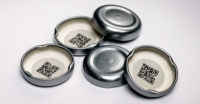Closing the Generation Gap in Packaging
Millennials and senior shoppers have similar, but different, needs…just don’t tell them that.


The Orbit Closure has won more than 10 global awards since its debut in 2011. Image courtesy of CROWN Holdings, Inc.


Consumers are increasingly demanding customized products to meet their specific needs. Consequently, there has been a growing trend of brands seeking to cater to different demographics rather than simultaneously to everyone. Male shoppers, for example, recently have been a popular target segment due to their increased role in purchasing household products and groceries.
However, this is just one type of consumer group. Research shows that, depending on varying factors, people’s needs and wants can be very similar at times while being extreme opposites at others. Whether brands already cater to well-known groups or are starting to notice new groups that have increased buying power, companies need to consider the demands of different demographics and the unique packaging requirements for these diverse consumer segments. Two different consumer groups have emerged as exciting segments for brands to target during the last few years: millennials—people who were born between 1981 and 1999—and the aging population, or senior consumers—a group that is comprised of anyone 60 years old and older.
What’s interesting is that both of these demographics value the same attributes in packaged goods but their needs and preferences vary greatly. Convenience, for example, continues to be one of the leading features most consumers look for when making a purchase. However, while millennials look for packaging that is easy to open while on the go, such as tear-open flexible packaging or food cans with easy-open ends, mature consumers sometimes find that same packaging difficult to handle without using additional tools. Furthermore, millennials prefer smaller packages while seasoned consumers find the font and print on smaller containers harder to read. Millennials will continue to be driving force for many brands, but with two billion people expected to be older than 60 by 2050, CPGs, particularly in the United States, need to begin developing tactics for that cater to the needs of such a dominant group.
The good news is that future packaging engineers are already analyzing new trends in consumer needs and package design. One such example is Jennifer Millin, a recent graduate of the University of Wisconsin-Stout. During her last semester in the fall of 2014, Millin conducted a class project to help identify the packaging needs for the aging demographic. “The aging consumer is reminded of their age by just looking in the mirror,” says Millin. “They don’t want to be reminded at the store shelf as well.”
While researching current packaging applications that relate to her project, Millin found Europe to be more advanced than other regions when it comes to employing user-friendly packaging. One packaging innovation she reviewed in detail was Crown’s Orbit Closure. Launched in 2011, the closure was developed to reduce the torque required to open the lid, making it twice as easy to open when compared to standard twist-off closures. The Orbit Closure consists of two parts: a central, floating panel that is vacuum sealed to the jar and an outer ring that acts as the opening and re-closing device. Once consumers twist the closure to loosen the ring, they will hear a pop, which indicates that the inner panel has lifted and the seal has been broken. A unique feature of the Orbit Closure is that it does not alter the look of the package on the shelf. This means that brands can make the switch to a more user-friendly closure without having the need to change their package design or messaging architecture.
An added benefit, according to research that Crown conducted in partnership with Sheffield Hallam University, was that 43 percent of participants in a study were willing to pay more for packaging that was easier to open. Additionally, more than half of participants in this research said that they were prepared to completely switch brands if an alternative offered an easy opening system.
Although future engineers are working toward identifying upcoming consumer needs, brands should also partner with a packaging supplier who has the experience and expertise in developing solutions for different customer segments. Millennials are a global force when it comes to driving packaging design, but senior consumers are rapidly closing the gap.
¹ https://www.specialtyfood.com/news/article/new-male-shopper/
Looking for a reprint of this article?
From high-res PDFs to custom plaques, order your copy today!






